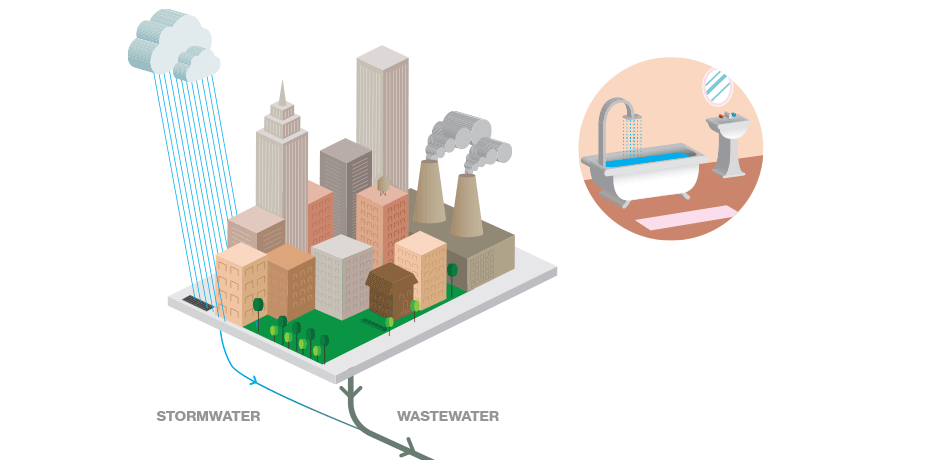Reliable Waste Water Treatment Equipments: Trick Approaches and Advantages
Reliable Waste Water Treatment Equipments: Trick Approaches and Advantages
Blog Article
Strategic Approaches to Boost Drainage Treatment Efficiency and Decrease Environmental Impact
In the realm of drainage therapy, the mission for boosted performance and lowered environmental impact is a continuous difficulty that requires strategic solutions. As society grapples with the crucial to manage water resources sustainably, a nuanced approach becomes essential. The combination of advanced treatment modern technologies, energy-efficient procedures, source healing approaches, enhanced nutrient removal methods, and smart tracking and control systems stands for a diverse structure for addressing these pressing worries. However, what exists at the core of this facility web of techniques is the possible to revolutionize the way we approach drainage treatment, not simply as a procedure of disposal, but as a valuable opportunity for development and environmental stewardship.
Advanced Therapy Technologies
Sophisticated membrane layer filtration systems have revolutionized sophisticated wastewater treatment procedures, significantly boosting the elimination of pollutants. These innovative systems work by requiring water via a semi-permeable membrane, successfully separating contaminations from the water stream. The membrane's tiny pores catch contaminants such as microorganisms, infections, and suspended solids, enabling only detoxified water to travel through. This modern technology has proven to be very reliable in removing a large range of contaminants, consisting of drugs, hefty metals, and natural compounds, which are commonly testing to eliminate via standard treatment methods.
In addition, membrane layer filtration systems provide various benefits over traditional therapy techniques. Additionally, these systems are highly versatile and can be easily integrated into existing therapy plants or utilized as standalone devices for decentralized applications.
Energy-Efficient Procedures
The combination of energy-efficient procedures in wastewater therapy systems is vital for maximizing resource usage and lowering functional costs. One essential technique to boosting power performance in wastewater treatment is the usage of sophisticated aeration systems, such as great bubble diffusers or surface area aerators, which can boost oxygen transfer performance and decrease power consumption.
Moreover, optimizing process control and automation with the use of sophisticated sensors and checking systems can enhance overall energy performance by adjusting operations in real-time based on real need and conditions. Applying energy audits and frequently checking power performance indicators are necessary techniques to recognize locations for renovation and track energy-saving campaigns properly. On the whole, the fostering of energy-efficient procedures in wastewater therapy not just profits the setting but also contributes to long-lasting expense financial savings and functional sustainability.
Source Recovery Strategies
With a focus on maximizing resource application and sustainability in wastewater therapy systems, the execution of resource recovery methods arises as a pivotal aspect in enhancing operational performance. Source recuperation strategies in wastewater treatment entail the identification and extraction of important resources from the waste stream, consequently transforming what was once taken into consideration waste right into a useful property. By applying resource recuperation strategies such as nutrient elimination and recovery, power generation from organic issue, and the production of recyclable water, wastewater treatment plants can lessen environmental effect while making best use of performance.

Enhanced Nutrient Elimination Strategies
Executing sophisticated nutrient removal methods is important for maximizing the performance of wastewater therapy systems. Boosted nutrient removal plays an essential role in lessening the environmental effect of treated effluent released right into water bodies. One of the key techniques made use of for find out here boosted nutrient elimination is the procedure of organic nutrient elimination (BNR), which entails the removal of nitrogen and phosphorus through biological procedures. This can be achieved through using specialized microbes that can transform nitrogen compounds right into inert nitrogen gas via denitrification, and collect phosphorus within their cells via a process called improved biological phosphorus elimination (EBPR)

In enhancement to BNR, advanced therapy methods such as membrane layer bioreactors (MBRs) and created wetlands can likewise be utilized to improve nutrient elimination effectiveness. By including these advanced nutrient removal strategies into wastewater treatment industries, towns and systems can effectively minimize nutrient air pollution and shield the setting.
Smart Surveillance and Control Systems
Making use of innovative modern technology, the assimilation of smart monitoring and control systems transforms the operational effectiveness of wastewater therapy facilities. These systems integrate sophisticated sensing units and information analytics to continually keep track of key specifications such as pH levels, turbidity, liquified oxygen, and circulation rates in real-time. By accumulating and analyzing this information, operators can obtain useful insights into the efficiency of the treatment procedures, allowing proactive modifications to optimize therapy performance.
Smart tracking and control systems additionally sustain remote monitoring abilities, allowing drivers to access real-time information and control functions from off-site areas. This remote accessibility boosts operational flexibility and responsiveness, allowing swift treatments in situation of system breakdowns or changes in influent high quality. The anticipating maintenance abilities of these systems aid protect against equipment failings and minimize downtime, eventually boosting the overall reliability of wastewater treatment operations.
Conclusion
To conclude, critical approaches such as sophisticated therapy innovations, energy-efficient procedures, source healing approaches, enhanced nutrient removal strategies, and clever monitoring and control systems play a vital role in improving wastewater therapy efficiency and decreasing environmental impact. By applying these techniques, wastewater therapy plants can enhance their overall efficiency, minimize power usage, recuperate useful resources, and guarantee compliance with environmental policies. These strategies are essential for sustainable and effective wastewater management practices.

In verdict, critical techniques such as innovative treatment modern technologies, energy-efficient procedures, resource healing techniques, boosted nutrient removal methods, and smart monitoring and control systems play an important function in boosting wastewater treatment effectiveness and decreasing environmental effect.
Report this page